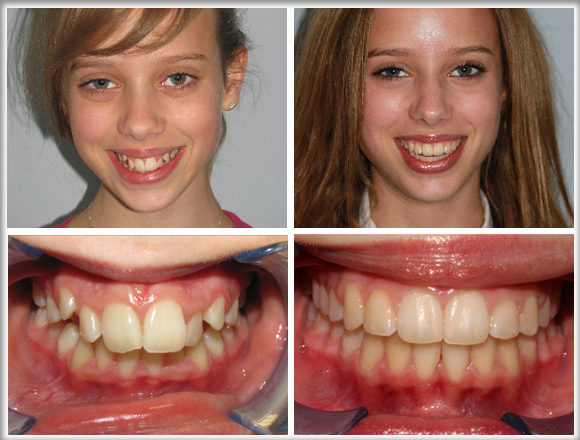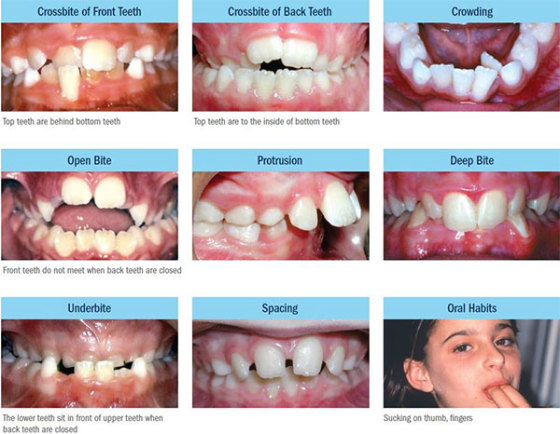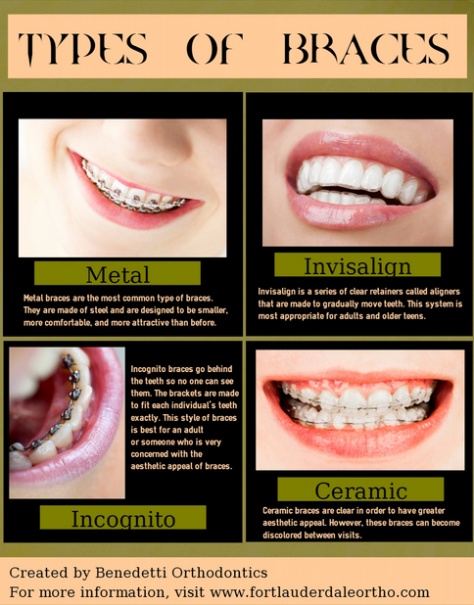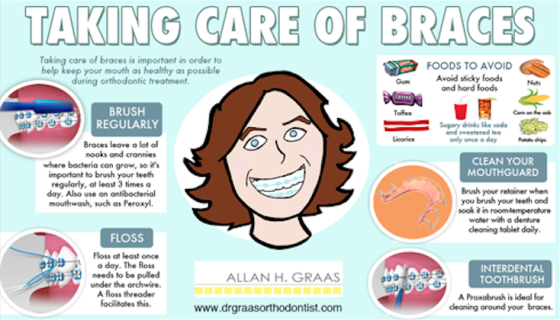Smile On: Preparing Your Teen for Braces
Not every child reacts the same way to the idea of braces. Whether they can’t wait for the first trip to the orthodontist or are worried about how they’ll look, it’s a good idea to discuss the issue before diving in. Keep these tips in mind when preparing for those first set of braces.
Responsibility
Braces represent a significant investment. It’s not enough to set up appointments and pay for the treatments.
For the best results, talk with your child before he or she meets the orthodontist. Let your child know what to expect during their first visit, as well as their responsibilities in between visits. How to clean and maintain the equipment is vital to getting the smile you both want.
Purpose of Braces
Your teen may experience less anxiety if they know the reason for braces. We all know they can provide people with confident smiles. It’s no so common knowledge a child’s teeth can grow in too close together and cause major health issues.
When teeth grow in crooked, rotated, or overlapping, especially if the mouth is too small to accommodate adult teeth, it can become painful, or even a risk to disease. If a teen has malocclusion, or a “bad bite,” this means the teeth aren’t properly aligned.
Misaligned teeth are more difficult to clean. This can lead to gum disease, cavities or tooth decay. Teens may wear braces when their upper and lower jaws don’t align or aren’t the same size. Misalignment causes overbites, underbites, and crossbites.
An overbite means the top jaw is larger than the lower jaw, and the top front teeth rest in front of the lower teeth. An underbite is the opposite, with the bottom teeth projecting beyond the top teeth. With a crossbite, some teeth may be closer to the tongue or the cheek than the corresponding teeth on the other jaw.
Types of Braces
Talk with your teen about all their options. While traditional metal braces are still common, they’re much smaller than they were years ago. This is the most inexpensive option. Self-conscious teens may prefer less noticeable options like ceramic braces. Unfortunately, they’re more expensive, take longer to install, and are more likely to chip or break.
Lingual braces are installed on the back of the teeth. While they aren’t visible when your teen smiles, this type isn’t for everyone. They’re more expensive than metal and ceramic versions, not every orthodontist can install them, and they may cause speech problems. According to an emergency dental center in Edmonton West, they aren’t as suitable for teens with smaller teeth as well.
For resistant teens, invisible braces might be the best choice. However, this type is the most expensive and isn’t suitable for everyone. Invisible braces, such as Invisalign, aren’t attached to the teeth. They’re rubber trays, or aligners, customized for your teen’s mouth. Teens must always wear them, except to eat and brush their teeth. The rubber trays are replaced every two weeks as the teeth slowly move into position.
Caring for Braces
Getting your teen to commit to properly caring for their own teeth may be the most important part of preparing them for braces. If they don’t practice good oral hygiene, it could in heavy plaque buildup. Teens also need to agree to avoid certain foods.
For instance, popcorn, hard candy and sticky sweets like taffy can damage braces. Teens with nervous habits, like chewing on pens, etc. need to break this behavior as well since it can damage braces.
Provide Support
Let your teen know you’ll be there to support them. Suggest taking photos so they can see visible progress during the treatment. Since their mouth will be sore after installation, discuss soft comfort foods you can prepare and what new kinds of snacks you can all enjoy.
For more advice on preparing your teen, call the orthodontist office. As Dr. Enrico J. Azarko says, most offer a patient welcome packet or pamphlets with more information.
Getting braces for the first time can be a nerve-racking experience. Remember your role as a parent in preparing your kids for the first installation. Once you both know what to expect the rest will be easy.









